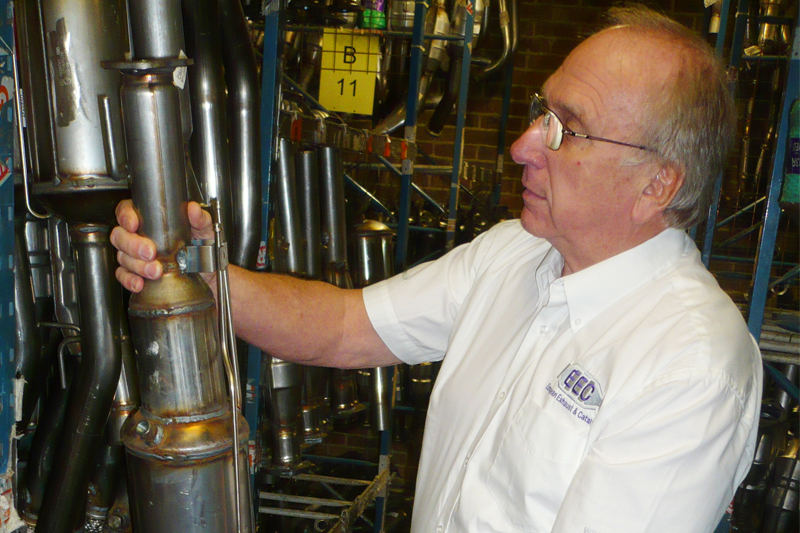
European Exhaust and Catalyst (EEC) explains the function of a DPF, and outlines what technicians need to be aware of to ensure optimum efficiency of the component.
The DPFs that are currently fitted to the majority of diesel vehicles are basically just porous filter for the collection and disposal of sooty particles or particulate matter (PM). In perfect combustion conditions, carbon dioxide, water and nitrogen are the end products. In reality, the incomplete combustion of diesel fuel results in emissions that include oxides of nitrogen (NOx), carbon monoxide (CO), carbon dioxide (CO2), water (H2O) and unburnt hydrocarbons (HC), as well as engine oils, debris, soot and ash particulates, all are known as PM.
This PM can be categorised into two groups: particles of 2.5 to 10 microns, and particles of less than 2.5 microns in size. Although most diesel particulates are very small, more than 99% are in the sub-2.5 microns range. All are damaging to your health, as they are carcinogenic.
Wall-flow diesel particulate filters usually remove 85% or more of the soot and can, at times (in heavily loaded conditions), attain soot removal efficiencies close to 100%. The DPF is a filter designed to collect PM, but if extra PM is produced, it will be the result of problems up stream of the DPF. Faulty components or issues that can generate high levels of PM include fuel injectors, glow plugs, incorrect oil, contaminated oil, turbos, EGR valves, air filter and a lack of regular maintenance. Some fuel additives such as EEC’s 6 in 1 will help to keep carbon deposits off all of these components, as well as assisting the regeneration of the DPF.
If the DPF sign is illuminated, check the engine oil for diesel contamination. Failure to do so could result in an expensive repair bill for a new DPF or/and a new turbo. It is extremely important to use the correct grade of engine oil as recommended by the manufacturers. 90% of turbo failure is oil- related, according to data from BTN Turbo.
The DPF is designed to not only collect the PM, but also to clean itself, in a process called regeneration. It will occur when the DPF reaches a pre-determined PM fill level (around 40%), and the ECU will then activate the regeneration process which can inject up to eight times the amount of fuel through the engine to produce temperatures in the DPF in excess of 550 ̊, which will burn off the PM within the DPF.
DPF regeneration will not take place if:
- An engine management light is on for any fault
- There is less than 20L of fuel in the fuel tank or if the fuel light is on
- The pressure sensors have a build-up of carbon
You must:
- Examine pressure pipes for damage – they must be clean and dry
- Check that the EGR system is working correctly
- Check that the vehicle has the correct spec engine oil
- Check the engine oil for diesel contamination (this could be the result of regeneration)
- Check the fuel additive (active system) Eolys
If the DPF is not regenerated and fills to over 90% or 45g of PM, the DPF may need replacing. Blocked DPFs are not covered under warranty. When fitting a new DPF, the ECU must be reset and then a forced regeneration carried out. This is to ensure that the ECU knows that the DPF and all related sensors are reset.









